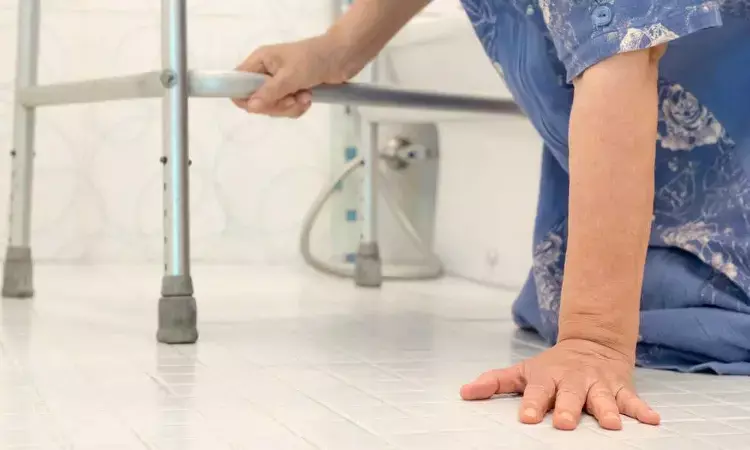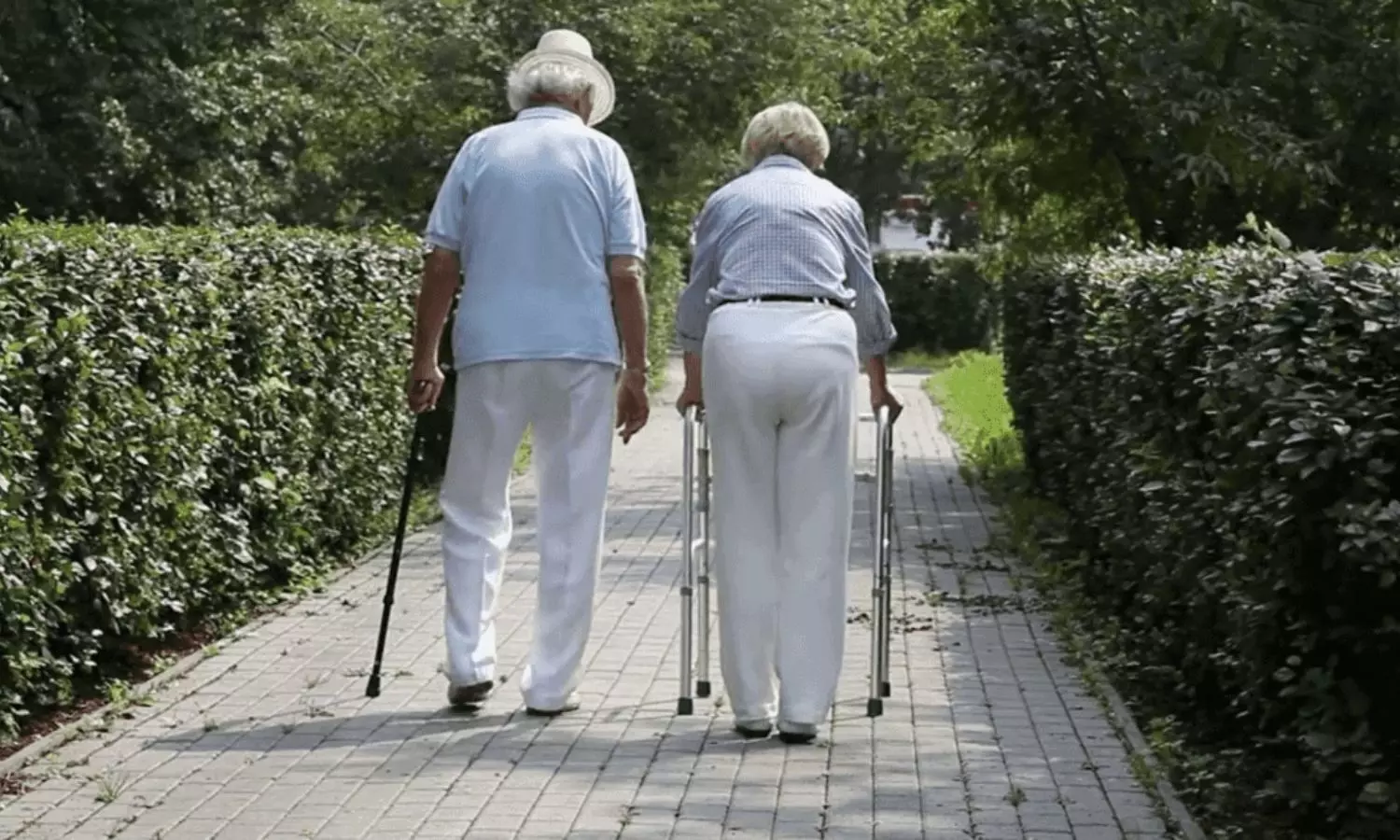- Home
- Medical news & Guidelines
- Anesthesiology
- Cardiology and CTVS
- Critical Care
- Dentistry
- Dermatology
- Diabetes and Endocrinology
- ENT
- Gastroenterology
- Medicine
- Nephrology
- Neurology
- Obstretics-Gynaecology
- Oncology
- Ophthalmology
- Orthopaedics
- Pediatrics-Neonatology
- Psychiatry
- Pulmonology
- Radiology
- Surgery
- Urology
- Laboratory Medicine
- Diet
- Nursing
- Paramedical
- Physiotherapy
- Health news
- Fact Check
- Bone Health Fact Check
- Brain Health Fact Check
- Cancer Related Fact Check
- Child Care Fact Check
- Dental and oral health fact check
- Diabetes and metabolic health fact check
- Diet and Nutrition Fact Check
- Eye and ENT Care Fact Check
- Fitness fact check
- Gut health fact check
- Heart health fact check
- Kidney health fact check
- Medical education fact check
- Men's health fact check
- Respiratory fact check
- Skin and hair care fact check
- Vaccine and Immunization fact check
- Women's health fact check
- AYUSH
- State News
- Andaman and Nicobar Islands
- Andhra Pradesh
- Arunachal Pradesh
- Assam
- Bihar
- Chandigarh
- Chattisgarh
- Dadra and Nagar Haveli
- Daman and Diu
- Delhi
- Goa
- Gujarat
- Haryana
- Himachal Pradesh
- Jammu & Kashmir
- Jharkhand
- Karnataka
- Kerala
- Ladakh
- Lakshadweep
- Madhya Pradesh
- Maharashtra
- Manipur
- Meghalaya
- Mizoram
- Nagaland
- Odisha
- Puducherry
- Punjab
- Rajasthan
- Sikkim
- Tamil Nadu
- Telangana
- Tripura
- Uttar Pradesh
- Uttrakhand
- West Bengal
- Medical Education
- Industry
Prescription Opioids Linked to Increased Fall Risks among elderly, study finds

In a significant revelation, a recent population-based cohort study conducted in New South Wales, Australia, has uncovered concerning associations between prescription opioid analgesics and an elevated risk of serious falls, particularly among older adults. The study's findings suggest that prescription opioids are associated with an increased risk of serious fall events among adults of all ages, with the greatest risk observed in individuals aged 85 or older. The study, designed to explore the age-related risk of serious fall events associated with opioid use, delves into the nuances of opioid exposure, time from initiation, and daily dosage.
The study results were published in the journal JAMA Internal Medicine.
The primary objective of the study was to unravel the intricate web of associations between prescription opioids and serious fall events. Researchers aimed to provide a comprehensive perspective by analyzing these associations across various age groups, shedding light on temporal patterns and dosage-dependent risks associated with the use of prescription opioids. Harnessing data that linked national pharmaceutical claims to diverse datasets encompassing sociodemographic information, clinical characteristics, medication use, healthcare utilization, and mortality records, the study included adults aged 18 and older who initiated prescription opioid treatment between 2005 and 2018.
Revealing Findings:
- The cohort, consisting of 3,212,369 individuals, witnessed a total of 506,573 serious fall events, including 5,210 fatal falls.
- Strikingly, the study illuminated that the risk of serious fall events was heightened across all age groups during exposure to opioids.
- Notably, individuals aged 85 or older faced the highest risk, with an adjusted incident rate ratio of 6.35 in comparison to those aged 18 to 44.
- Temporal analysis revealed a critical period within the first 28 days following opioid initiation, marked by an increased risk of serious falls.
- This risk, the study found, escalated with age.
- Additionally, for individuals aged 18 to 84, there was a discernible correlation between higher daily opioid doses and the occurrence of serious fall events.
- The study's findings prompt a reconsideration of opioid prescription practices, emphasizing the imperative need for healthcare providers to carefully weigh the risks and benefits of prescribing opioids, particularly in older populations.
The critical window of the initial month following opioid initiation emerged as a pivotal period, urging targeted fall prevention efforts during this timeframe. The study advocates for a holistic approach to patient care, prioritizing safety, especially among vulnerable populations. As prescription opioids continue to be a mainstay in pain management, this study addresses a pressing public health concern, urging a reevaluation of opioid prescription practices and advocating for a proactive stance on falls prevention in tandem with opioid therapy. The research marks a significant step toward safeguarding the well-being of patients and fostering a more nuanced understanding of the risks associated with prescription opioids across diverse age groups.
Further reading: Age-Related Risk of Serious Fall Events and Opioid Analgesic Use. doi:10.1001/jamainternmed.2023.8154
BDS, MDS
Dr.Niharika Harsha B (BDS,MDS) completed her BDS from Govt Dental College, Hyderabad and MDS from Dr.NTR University of health sciences(Now Kaloji Rao University). She has 4 years of private dental practice and worked for 2 years as Consultant Oral Radiologist at a Dental Imaging Centre in Hyderabad. She worked as Research Assistant and scientific writer in the development of Oral Anti cancer screening device with her seniors. She has a deep intriguing wish in writing highly engaging, captivating and informative medical content for a wider audience. She can be contacted at editorial@medicaldialogues.in.
Dr Kamal Kant Kohli-MBBS, DTCD- a chest specialist with more than 30 years of practice and a flair for writing clinical articles, Dr Kamal Kant Kohli joined Medical Dialogues as a Chief Editor of Medical News. Besides writing articles, as an editor, he proofreads and verifies all the medical content published on Medical Dialogues including those coming from journals, studies,medical conferences,guidelines etc. Email: drkohli@medicaldialogues.in. Contact no. 011-43720751




